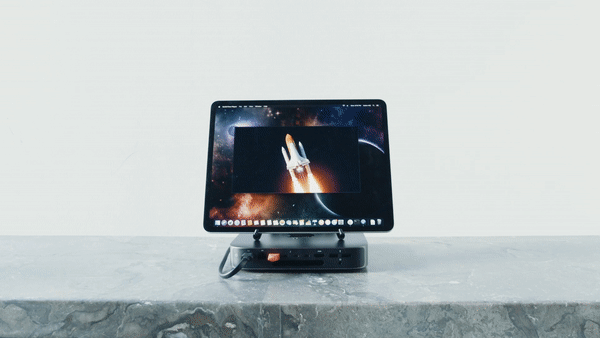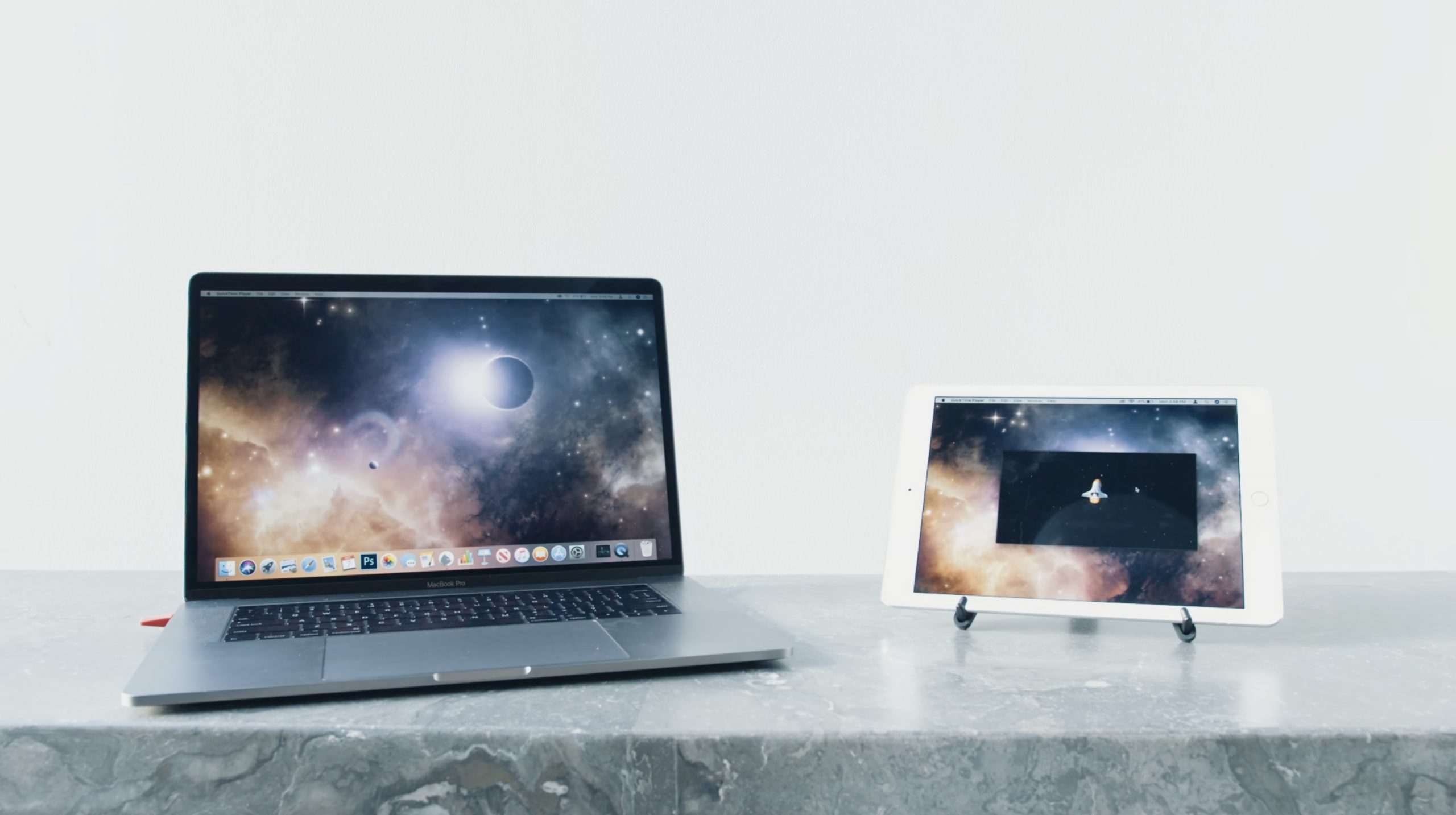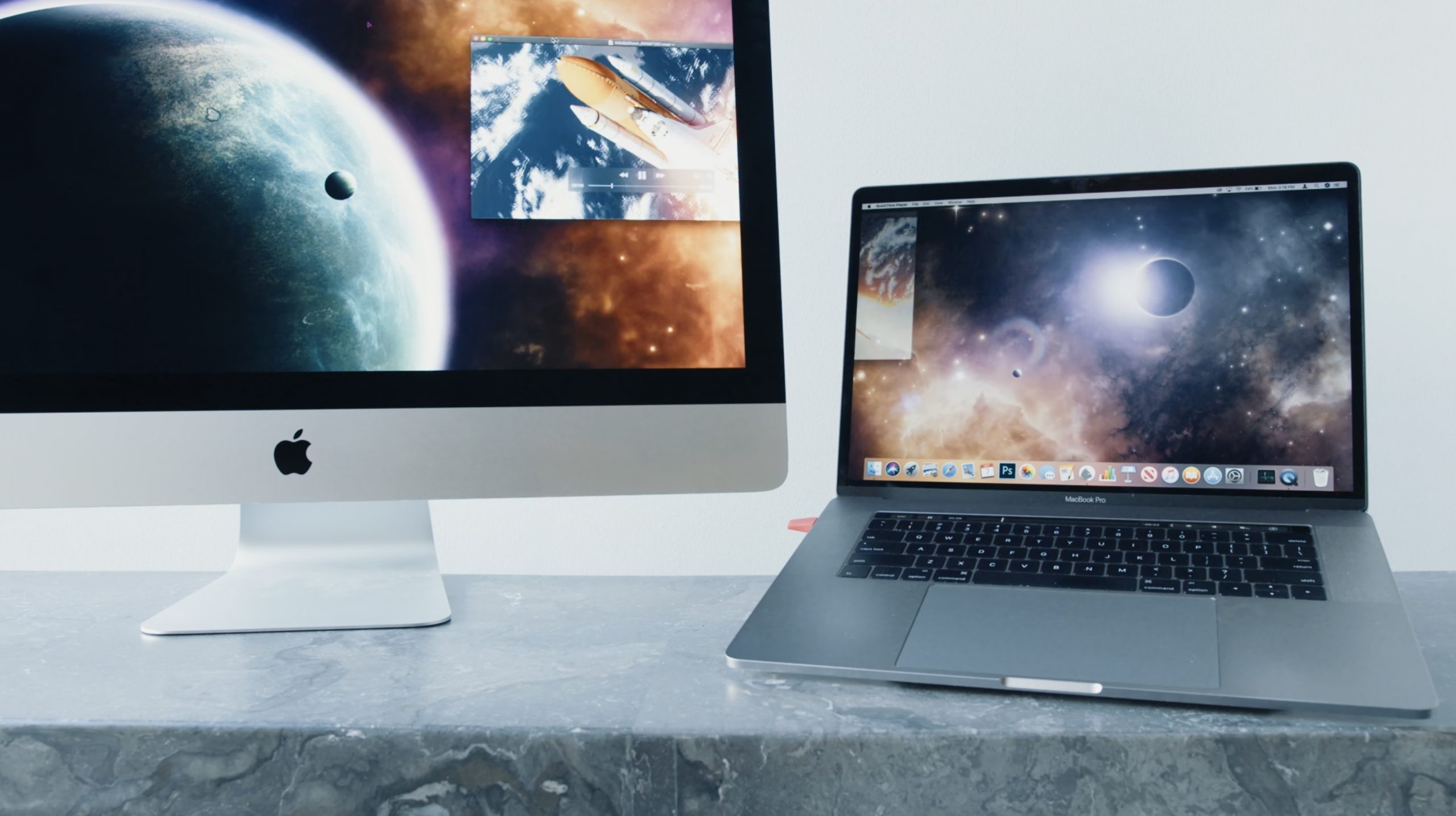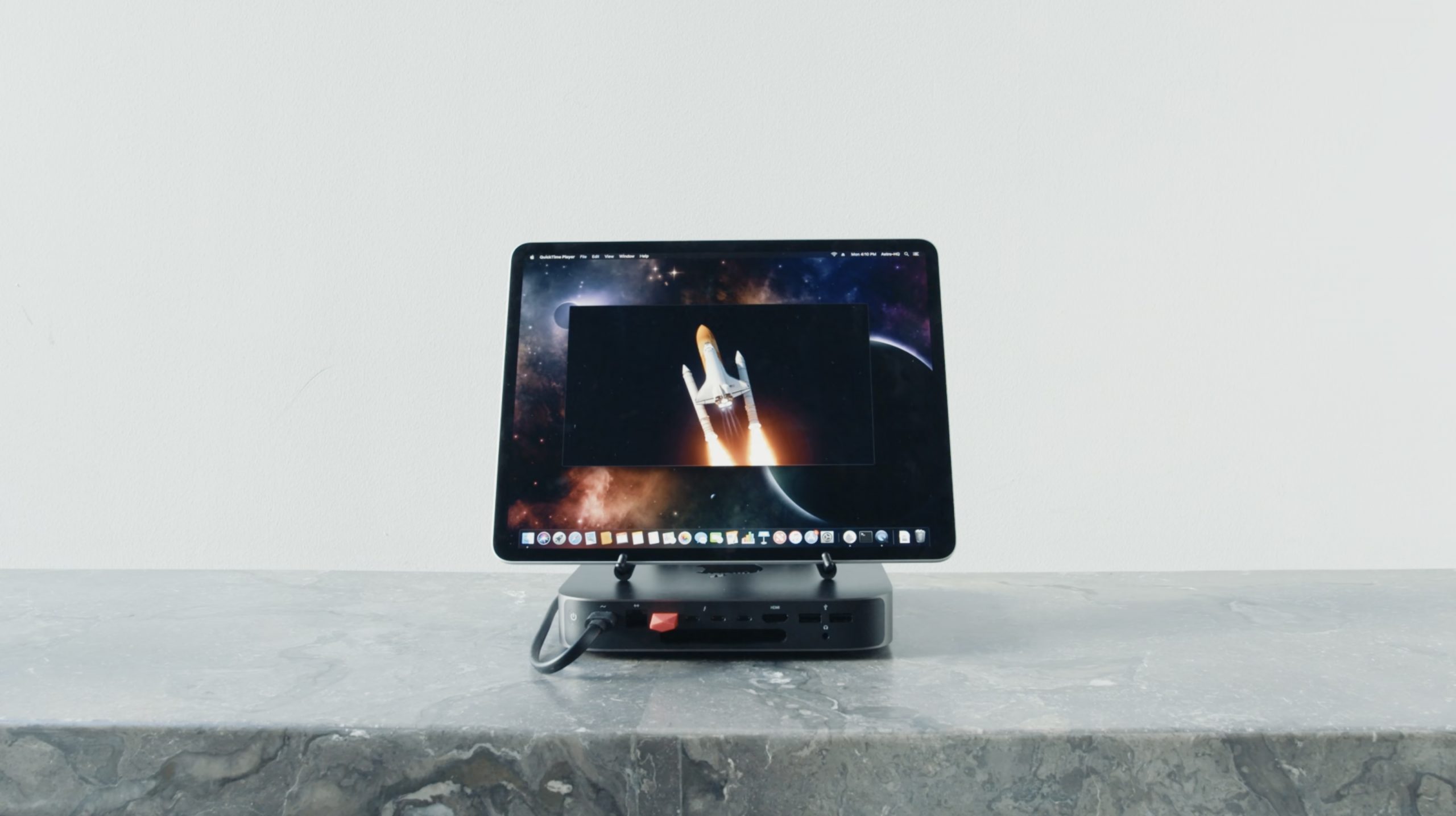
let luna adapt to your workflow
Luna comes equipped with versatile display modes:
- Computer-to-iPad Mode
- Computer-to-Mac Mode
- Headless Mode
- Teleprompter Mode
Each mode provides effortless flexibility and is designed to cater to your unique workflow needs. Whether you’re a remote worker or just like to switch it up at the office, Luna has a configuration that’s perfect for you.
Only one Luna Display unit is necessary to achieve any of the following Mode setups. Each mode also requires an app download on the Primary and Secondary device.
Computer-to-iPad Mode
Luna Display turns your iPad into a second display for Mac or PC. With full support for external keyboards, Apple Pencil, and touch interactions, Luna harnesses the power of your desktop and extends your workspace onto a touchable device.
Computer-to-iPad Mode Features
- Touch pan and zoom gesture support
- External keyboard support for iPad
- Apple Pencil support
Minimum Requirements
- Mac: Primary Mac must be a 2011 model or later, and running macOS 10.13 (El Capitan) or later
- Windows: Microsoft Windows 10 64-bit, Build 1809 or later (Luna Display does not support Surface Pro devices).
- iPad must be running iOS 12.1 or later. 32-bit devices are not supported.
How to Get Started
- Plug the Luna Display hardware directly into your desktop and connect to your iPad either via USB cable or with a local WiFi connection.
- After connecting desktop and iPad apps, the iPad screen will become an extension of your desktop screen. Similar to a regular external monitor connection, depending on your Display settings, you may see a different desktop background on your iPad or notice that files and windows have shifted over. You can always adjust Display settings through Displays in macOS System Preferences.

Computer-to-Mac Mode
Extend your display to any Mac using Luna Display’s Computer-to-Mac Mode. Need a larger display option? Use any extra Mac computer as a second or extended display of your primary Mac or PC computer. Dust off your old Macs and use them as an external monitor! Any combination of Mac models can be used for this Mode:
- iMac + MacBook Pro
- iMac + Windows PC
- MacBook + MacBook
- Mac mini + MacBook (MacBook as main display for Mac mini)
Computer-to-Mac Mode Features
- Trackpad support for both computers
- Keyboard support for both computers
- Works with older Mac models (Secondary Mac)
Minimum Requirements
- Primary Computer
- Mac running macOS 10.13 (High Sierra) or later
- Or a PC running Microsoft Windows 10 64-bit, Build 1809 or later
- Secondary Mac
- Mac running macOS 10.13 (High Sierra) or later
- Mac running macOS 10.13 (High Sierra) or later
How to Get Started
- Download the Luna Display Primary app on the Primary computer of your choice. Download the Luna Display Secondary Mac app on the Secondary Mac of your choice.
- Follow connection instructions on the Primary app. Connection is successful when the screen of your Secondary Mac changes and reflects settings from your Primary desktop.

Headless Mode
With Luna Display, turn your iPad into the primary display for Mac mini. Combine the best of Mac mini and iPad by harnessing the processing power of the Mac mini and the edge-to-edge full display of the iPad.
Headless Mode Features
- Touch pan and zoom gesture support
- External keyboard support for iPad
Minimum Requirements
- Mac mini must be a 2011 model or later, and running macOS 10.11 (El Capitan) or later
- iPad must be running iOS 12.1 or later. 32-bit devices are not supported.
- External mouse and keyboard connected to Mac mini are optimal for this setup in case of MacOS permissions and logins
How to Get Started
- An external display is required to get set up, but is only needed the first time you configure your devices (unless FileVault is enabled).
- Luna Display requires a Mac application to run. For Headless Mode, if FileVault is in use, an external display will be needed to unlock your drive whenever you reboot.

Teleprompter Mode
Teleprompter Mode flips your iPad screen to work with a beam splitter — ideal for giving direct eye contact during video calls.
A beam splitter (or teleprompter) splits a beam of light in two, reflecting an image back at you. Without Teleprompter Mode, the image on your iPad would be reflected at you upside down and backward. But Teleprompter Mode automatically flips your display image, so that your beam splitter reflects the correct image orientation.
How to Get Started
- Grab your gear! You’ll need to get set up with a beam splitter, camera, and Luna Display. We like the Glide Gear TMP100 beam splitter (Amazon, $199).
- Launch Luna Display. Plug the Luna Display hardware into your Mac, and open the Luna Mac and iPad apps. Verify that your apps are updated to version 4.2 (you can get the latest versions here).
- Enable Teleprompter Mode. In the Luna Display Mac app, go to <Preferences>. Navigate to the <Advanced> tab. Check the box to <Enable Teleprompter Mode>. When this mode is enabled, your second display will appear upside-down. Please note that direct touch interaction is not supported in this mode.


